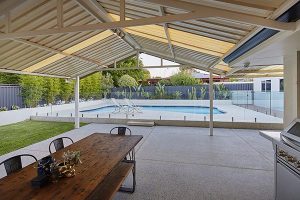Is your reticulation up to scratch?
When my wife and I purchased our current house a few years ago, we inherited an old reticulation system that needed a lot of work to bring it even remotely up to scratch. One corner of our back lawn always struggled no matter what we did. I would use wetter soil, top dress it with good soil, fertilise it, edge it, mow it and do the odd bit of hand watering when I had time. But no matter what I did the lawn in this section continued to struggle and always died off when the weather became hotter. It became quite an eye sore!
When installing a home reticulation system, it’s particularly important to pay attention to the way the sprinklers are set out. It’s not enough to just wet the area. You must ensure the sprinklers are set out “head to head”. One sprinkler throws the entire way to the next sprinkler for overlapping coverage. Some sprinkler heads let out a different amount of water at the end of the spray radius than at the beginning and without having head to head coverage the watering would not be even. Overlapping coverage always gets the best result and is the waterwise way of installing a system.
You may ask, “What is waterwise about adding in MORE sprinklers?” Well, it is more efficient, and you should be able to use less water. Distributing the water in an efficient manner will ensure the best result for the amount of water applied. An even application enables even plant and lawn growth, which is important if you want your lawn and gardens to look nice!
I often get called to inspect reticulation systems and lawns that have dry patches all over them. Normally the owners are convinced that they have lawn beetle or a lawn disease. However, I almost always find that it’s an issue with the efficiency of the system. The first thing I do is to put a shovel down deep into the dry patch of the lawn and dig it up. Almost 100% of the time it’s bone dry after the first inch. When the soil is dry, this tells me that the water is not penetrating deeply to the roots. If the top of the soil is slightly wet, it is not an indication of what is happening below the ground.
So getting back to my story we repaired the reticulation, moved the sprinkler to the corner and added in another sprinkler for the other corner. We then set the sprinklers to throw back to each other and adjusted them down to minimise overspray. The result was astonishing. Within several months, the lawn had grown back thick and green. Some simple changes to our reticulation system produced a very attractive garden.
Need Us To Help With Your Garden?


